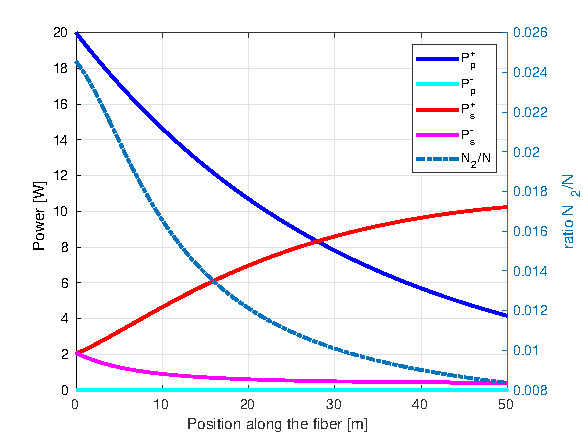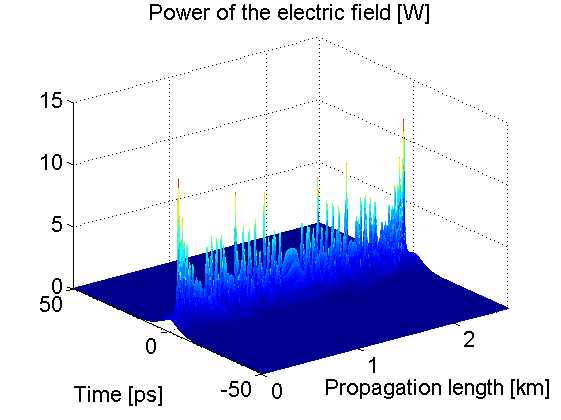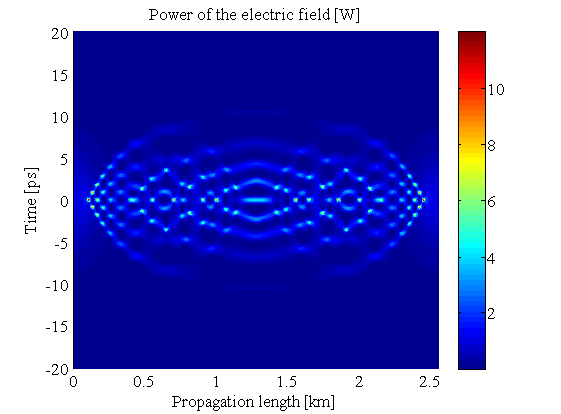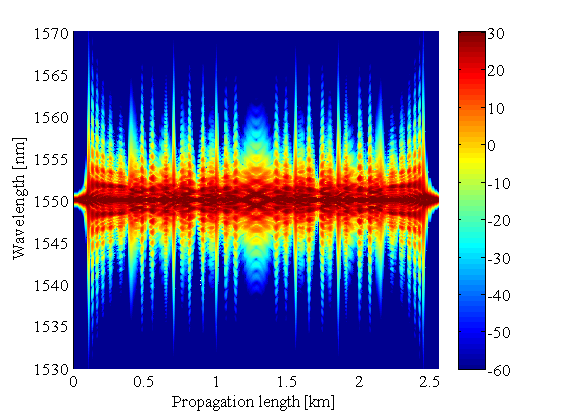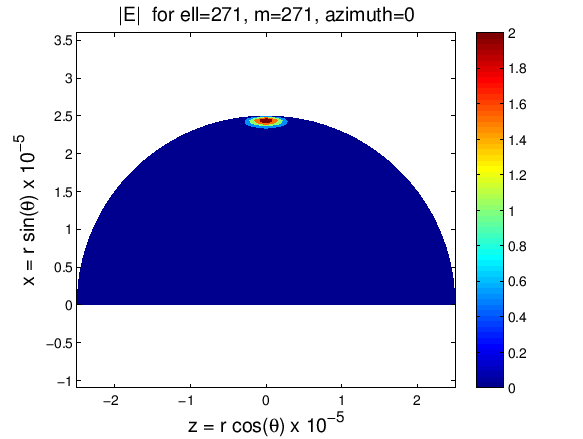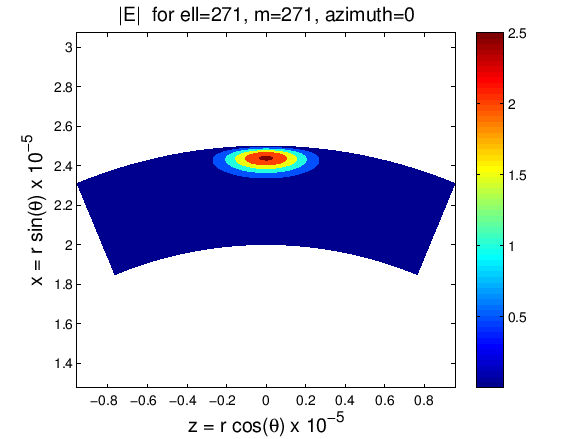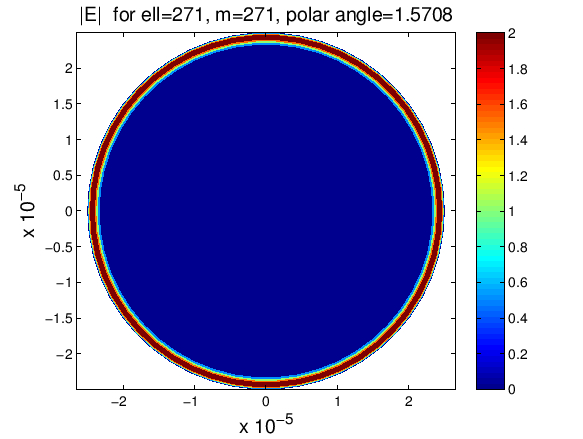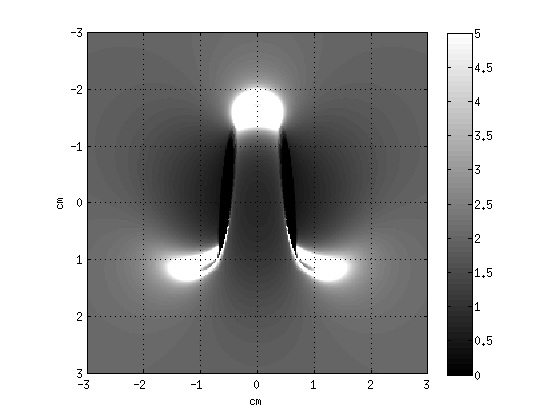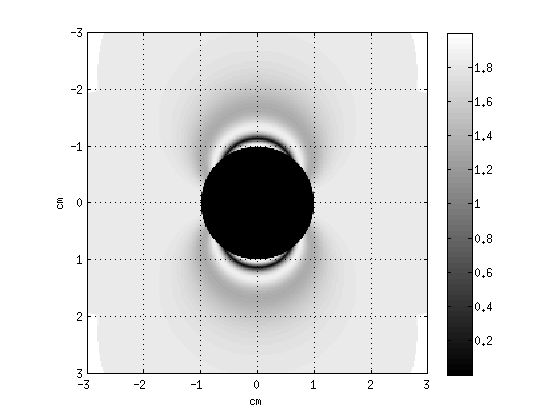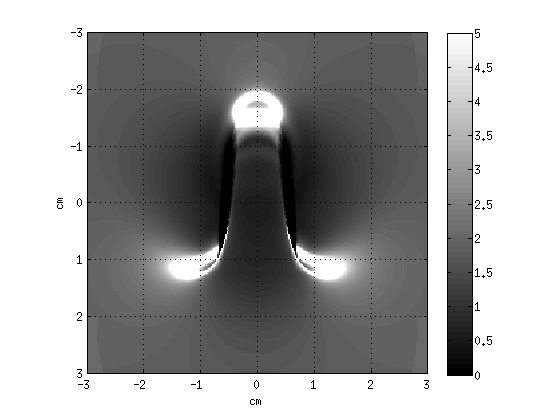The following softwares and Matlab/Octave toolboxes are available
at download. They are distributed under the
under French
law and abiding by the rules of distribution of free software.
S
SHIPOL : a Matlab program for
simulation of light-wave propagation in high-power fiber
lasers
SHIPOL is a Matlab program for simulation of light-wave
propagation in a double-clad rare-earth-doped fiber-laser based.
It is based on the
rate-equation theory that describes the distributions of
inversion populations and optical powers along the fiber when a
stationary regime has been attained. The specificity of the
boundary value problem (BVP) stemming from the rate-equation
theory is that the boundary conditions are note separated due to
the reflection of the laser signal by Bragg mirrors at the two
fiber ends. This numerical difficulty is overcome by a
reformulation of the BVP in an equivalent BVP with separated BC,
thereby opening the possibility of using Matlab BVP solvers.
This software is governed by the
CeCILL license under French
law and abiding by the rules of distribution of free software.
Snapshot of the SHIPOL program
results for the propagation in a singlemode Ytterbium doped
optical fiber.
Download :
Toolbox as a zip archive from HAL
SPIP : a computer program for the
simulation of light-wave propagation in optical fibre
SPIP is a portable command-line driven utility written in C
language for Linux and MS-Windows aimed at solving the
Generalized Non-Linear Schrõdinger Equation (GNLSE) as well as
the Non-Linear Schrõdinger Equation (NLSE) involved
in optics in the modelling of light-wave propagation in a
passive optical fibre.
In the SPIP program is implemented the Interaction Picture
method, a new efficient alternative method to the Symmetric
Split-Step method together with a dedicated costless adaptive
step-size control based on the use of a 4th order embedded
Runge-Kutta method.
This software is governed by the
CeCILL license under French
law and abiding by the rules of distribution of free software.
It has been published in Computer Physics Communications in
2015.
Snapshots of the SPIP program
results for the propagation of a 10th order Soliton in a
SMF-28 fiber.
Download :
SPIP executable and sources
archive (release 1.1)
SPIP documentation
You can refer to this program
as :
S. Balac and A. Fernandez,
SPIP: A
computer program implementing the Interaction Picture method
for simulation of light-wave propagation in optical
fibre, Computer Physics Communications, 2015.
(DOI :
10.1016/j.cpc.2015.10.012)


WGMode : a Matlab Toolbox
dedicated to the study of whispering gallery modes in optical
micro-spheres
The
WGMode Matlab Toolbox is constituted of various Matlab scripts
to study whispering gallery modes in optical micro-spheres.
These scripts allow to explore resonance conditions for TE or
TM modes, to visualize whispering gallery TE or TM modes in a
micro-sphere and to compute the volume of any given mode.
Namely, the WGMode Matlab Toolbox contains the following
Matlab scripts :
- ELLRES
computes, for a given wavelength, the values of the mode
index for which a resonance occurs
- WVLRES
computes, for a given couple of mode index $(\ell,m)$, the
values of the wavelength for which a resonance occurs
- VOLMOD
computes the volume of a whispering gallery TE or TM modes
in a micro-sphere
- PLTMOD plot
the whispering gallery modes
This toolbox is governed by the
CeCILL license under French
law and abiding by the rules of distribution of free software.
Various representation of the TE mode with indexes
l=271, m=271 and wavelength 804.57 nm
in a micro-sphere with
radius 25 μm and optical index 1.453
Download :
WGMode Toolbox
as a ZIP archive from Mendeley Data,
WGMode
documentation
You can refer to this program
as :
S. Balac.
WGMode
: A Matlab toolbox for whispering gallery modes volume
computation in spherical optical micro-resonators
Computer Physics Communications (243, 121-134 (2019)
DOI:10.1016/j.cpc.2019.05.002


ARAMIS : a Matlab program for the
numerical simulation of metallic implant induced artifacts in
magnetic resonance imaging
We have developed a Matlab program that simulates both the
susceptibility and the eddy current artifacts in the case of a
metallic implant with spherical shape (for such geometry,
analytical expressions for the induced RF and static magnetic
fields are known). These two kinds of artifact add to the MRI
image without our knowing of the contribution of each one to the
image distortion. Our program enables to hide one of the two
artifacts and image the other or image the effects of the two
artifacts together. It is then possible to compare for different
materials the importance of each source of image distorsion.
This program is governed by the CeCILL license under French law
and abiding by the rules of distribution of free software.
MRI artifact generated by a ball of Titanium simulated
with the ARAMIS program.
Susceptibility
artifact on the left picture, RF artifact on the center
picture and the actual artifact on the right combination of
both effects.
Details on the mathematical modeling from where the Matlab
program originates can be obtained in the following articles :


ATHOS : a Matlab program for the
numerical simulation of magnetic susceptibility artifacts for
cylindrical gemoetries in magnetic resonance imaging
We have developed a Matlab program that simulates magnetic
susceptibility artifacts in the case of a metallic implant with
cylindrical shape.
This program is governed by the CeCILL license under French law
and abiding by the rules of distribution of free software.
